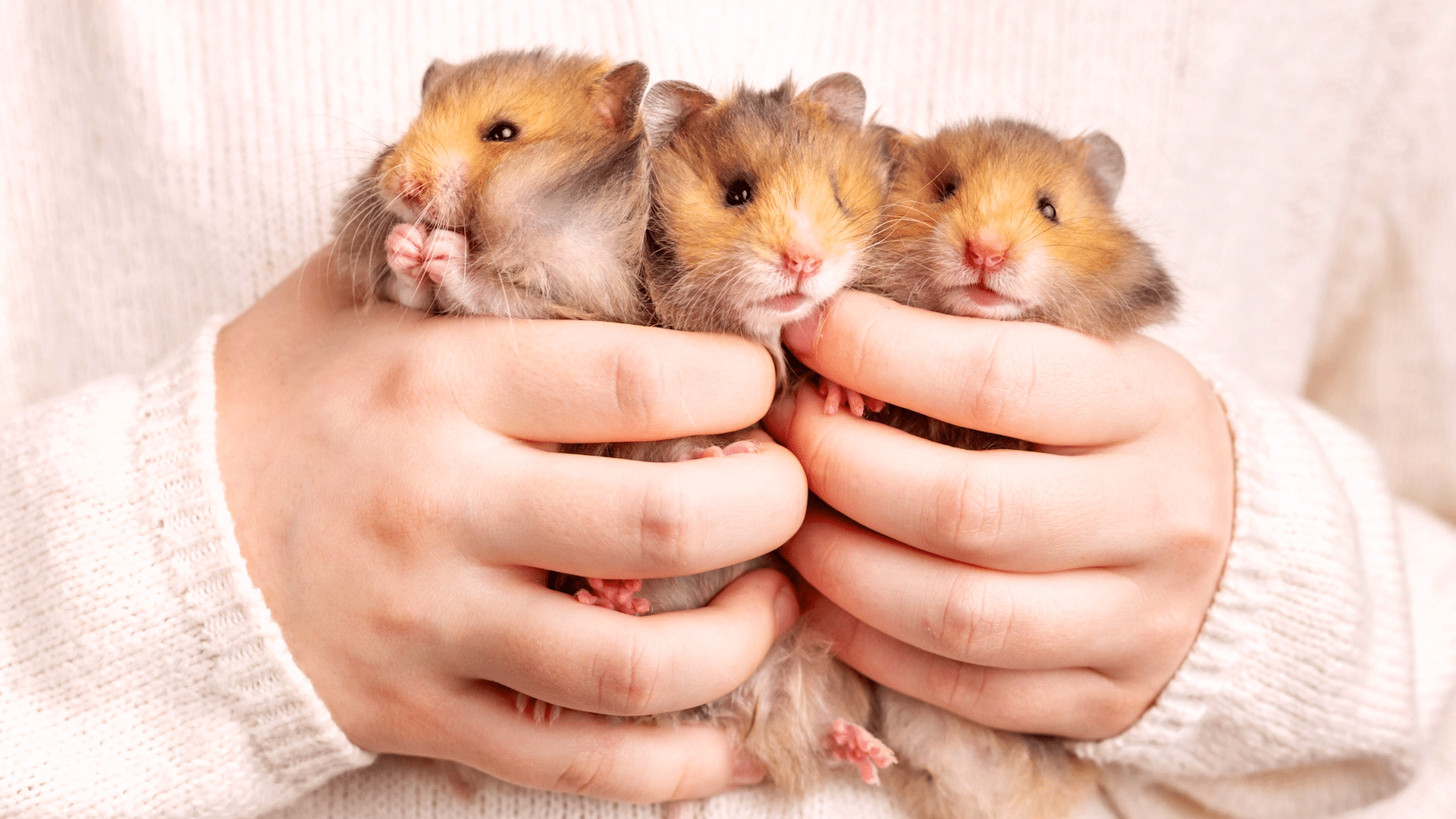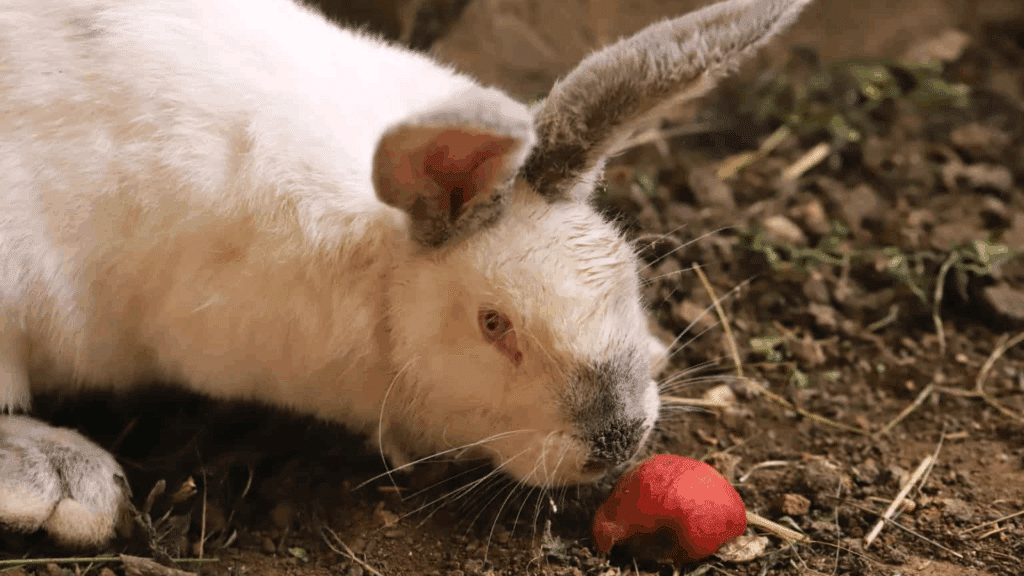Teddy bear hamsters are loved for their fluffy coats, round faces, and gentle nature. They’re calm, easy to care for, and make great pets for families or first-time hamster owners.
In this Teddy Bear Hamster Care Guide, you’ll find simple tips and care secrets to keep your little friend happy and healthy.
My blog covers everything you need to know, including:
- How to set up a cozy, safe habitat
- What to feed your hamster every day
- Common health issues and how to spot them early
Each section is written with real owner insights and simple, honest advice. If you’re a new or experienced owner, this guide will help you care for your hamster and keep them happy.
What is a Teddy Bear Hamster?
When I first heard the term Teddy Bear Hamster, I pictured a tiny ball of fur with a big heart, and that’s not far from the truth.
These hamsters have soft fur and a gentle nature, making them great pets for families and beginners. They’re actually a type of Syrian hamster, often called “teddy bears” because of their fluffy look and calm behavior.
Compared to smaller breeds like dwarfs or robos, teddy bear hamsters prefer living alone and enjoy a quieter space.
What really sets them apart is their friendly, easygoing personality. They usually warm up to people faster and love routine care.
If you’re looking for a pet that’s peaceful, fun to watch, and enjoys gentle handling, a teddy bear hamster might be the perfect match for you.
Creating the Perfect Habitat

When I set up my hamster’s home, I learned that a spacious cage makes the biggest difference. You’ll want something at least 24 by 12 inches with good airflow.
For bedding, I use paper-based material because it’s soft, safe, and easy to clean.
Avoid cedar or pine shavings; they can harm your hamster’s breathing. I always add a few hideouts where your hamster can rest or store food. A small wooden house or cardboard tunnel works great.
Don’t forget safe chew toys to keep their teeth healthy and boredom away.
I clean the cage weekly, replacing dirty bedding and wiping surfaces with mild soap and water. A simple, consistent setup keeps your hamster calm and comfortable.
When you set up their space right, you’ll notice they explore more, sleep better, and seem genuinely happy in their little world.
Feeding and Enrichment for a Happy, Healthy Hamster
Feeding your teddy bear hamster right and keeping them active is key to their happiness. I’ve found that a mix of good food and daily play keeps them active and happy.
Daily Diet Plan
I like to start with a quality store-bought hamster mix because it provides the right balance of seeds, grains, and protein.
You can offer small pieces of fruit and veggies like apples, carrots, and broccoli to avoid stomach issues.
Always keep clean water available in a bottle or shallow dish.
Avoid sticky or sugary treats since they can harm their teeth. I feed mine once in the evening since that’s when they’re most active.
Keeping a steady schedule helps your hamster know when to expect food and builds trust between you both.
Fun Enrichment Ideas
Hamsters love to stay busy, and mine is no exception. I fill the cage with tunnels, chew toys, and climbing tubes to keep them moving.
These small additions help prevent boredom and promote healthy teeth. You can also set up a safe playpen or let your hamster explore in a closed area for about 15 minutes daily.
Add cardboard boxes or toilet paper rolls; they love crawling through them. Rotate toys weekly to keep things fresh and exciting.
Simple playtime like this makes your hamster’s day and strengthens your bond, too.
Taming, Handling, and Grooming Tips for a Calm Hamster

Building trust with your hamster takes patience and care. This is what worked for me and how you can help your hamster feel calm, safe, and clean every day.
1. Talk Softly and Move Slowly
When I first brought my hamster home, it was shy and hid most of the time.
I learned to talk softly near the cage every day so it could recognize my voice. Soon, it began poking its head out when it heard me.
You can do this too, sit beside the cage and speak in a calm tone. Avoid sudden sounds or movements, and keep your hands steady when near the cage.
Over time, your hamster will learn that you’re not a threat and will become more curious and relaxed.
2. Hand-Feed for Trust
One of the best ways I found to earn trust was through hand-feeding. I started by placing a sunflower seed on my palm and holding it still near the cage door.
At first, my hamster only sniffed and ran away, but after a few days, it began taking food from my hand.
You can try the same method, using small, healthy treats like seeds, oats, or apple pieces. Keep your hand low and still, and let your hamster decide when to approach.
Once it eats comfortably from your hand, it’s a sign that it’s starting to trust you.
3. Let Them Set the Pace
Every hamster has its own comfort level, and I realized that pushing too quickly only makes them scared. I once tried to pick mine up too soon, and it avoided my hand for days.
After that, I learned to wait. Each day, I placed my hand in the cage, and within a week, it climbed on its own.
You can follow this too; let your hamster move at its own speed. Let your hamster take its time to sniff and look around your hand before you try to lift it.
When it feels like it’s choosing to climb on its own, it stays much calmer and more relaxed.
4. Keep Handling Short and Gentle
Once your hamster starts trusting you, it’s time to practice gentle handling. I always scoop it with both hands, forming a soft cup around its body.
I stay close to the cage or floor in case it jumps. You should start with short handling sessions, just a few minutes at a time.
Don’t chase or grab; instead, let it crawl onto your hand.
If it gets nervous, slowly lower it back into the cage. Over time, it will enjoy being held and even sit quietly on your palm.
5. Simple Grooming Habits
Hamsters usually keep themselves clean, but sometimes they need a little help. I check mine weekly to make sure its fur looks smooth and dry.
If it looks oily or dusty, I place a sand bath in its cage using fine chinchilla sand.
Watching it roll and clean itself is fun and helps remove dirt naturally. You can also gently brush long-haired hamsters with a soft toothbrush to prevent tangles.
If the nails get long, carefully trim the tips with small pet nail clippers. Keep it short and calm, and give a treat after to make it pleasant.
6. Reduce Stress Daily
I noticed that having a daily routine makes my hamster more relaxed. I feed, talk, and handle it around the same time every day. You can do the same; it helps your hamster know what to expect.
Keep the cage in a quiet room away from loud noises, and avoid sudden cage changes or too much handling when it’s resting.
Provide toys, tunnels, and chew sticks to keep it active and happy. When your hamster feels safe and busy, it stays calm and is easier to handle.
Health Risks and Common Threats to Watch For
A healthy hamster is active, curious, and clean. Still, even with good care, small health issues can appear quickly. This is what to look for and how to handle it calmly.
- Early signs of illness: Watch for tiredness, less eating, sneezing, or wet fur around the tail. If your hamster hides more or stops grooming, it might not feel well.
- Weight and appetite changes: Sudden weight loss, overeating, or drinking too much water can point to health problems.
- Fur and skin checks: Look for bald spots, sores, or red skin. These can mean mites or allergies.
- Eyes, nose, and mouth: Clear eyes and a dry nose are signs of good health. Discharge, swelling, or drooling can be early warnings.
- Breathing: Listen for wheezing or clicking sounds; these may suggest a respiratory issue.
- Overheating risk: Keep the cage away from direct sunlight. Hamsters handle cold better than heat. A cool, shaded spot is safest.
- Diet-related problems: Too many sugary treats can cause obesity or diabetes. Stick to a balanced diet of hamster pellets, seeds, and small fruit or vegetable pieces.
- Cage hygiene: Dirty bedding or stale food can cause infections. Change bedding weekly and clean water bottles often.
- When to see a vet: If symptoms last more than two days, or if your hamster stops eating, shaking, or bleeding, contact a small animal vet right away. Early care makes a big difference.
Owner Insights and Cleaning Tips You Can Trust

Hamster owners on Reddit agree that simple, consistent cleaning and the right setup make a big difference. Many said pet store cages are too small, causing stress and bar chewing.
Switching to a 40-gallon glass tank with deep bedding helped their hamsters relax and stay cleaner.
Daily spot cleaning, removing wet bedding and old food, prevents odors, while a weekly refresh with unscented bedding keeps the space healthy.
Most reuse a bit of clean bedding so the cage still smells familiar.
Owners also suggest using a mild vinegar-water mix instead of strong cleaners and letting everything dry fully before refilling.
Some shared that giving a new chew or toy after cleaning helps their hamster settle in faster and stay calm. You can read the full discussion and more owner insights on Reddit.
Fancy Hamster vs. Teddy Bear Hamster
Many people get confused by these names, but both belong to the Syrian hamster family. The difference mostly comes from coat type and appearance, not species.
| Feature | Fancy Hamster | Teddy Bear Hamster |
|---|---|---|
| Size | Usually smaller, around 5–6 inches long | Slightly larger, about 6–7 inches long |
| Coat Type | Short, smooth fur that’s easy to groom | Long, fluffy fur that needs regular brushing |
| Temperament | Active, curious, and easier to handle | Gentle but can be shy; prefers calm handling |
| Care Needs | Low maintenance; less grooming required | Needs frequent grooming to prevent tangles |
| Common Confusion | “Fancy” is a general pet store term for short-haired Syrians | “Teddy Bear” refers to the long-haired Syrian variety |
Fun and Fascinating Facts About Teddy Bear Hamsters
Teddy Bear hamsters are playful and full of little surprises. These are some quick facts that show why they’re such fun pets to have.
- They usually sleep during the day and become most active at night.
- Their sense of smell is stronger than their eyesight, helping them recognize you by scent.
- Each hamster has its own personality; some are playful, while others like quiet time.
- They can store food in cheek pouches that stretch all the way to their shoulders.
- A Teddy Bear hamster’s fur can grow over two inches long if well cared for.
- They enjoy running on wheels, sometimes traveling up to five miles in one night.
- These hamsters often make soft squeaks or clicks when they’re curious or happy.
- With gentle handling, they can live up to 2–3 years and become very friendly pets.
Conclusion
Caring for a hamster isn’t hard, but it does take patience and daily attention.
Small actions like talking softly, cleaning the cage, or hand-feeding treats can make a big difference in how safe and happy your hamster feels.
A few minutes of care each day helps build trust and keeps your pet healthy.
Over time, you’ll notice how your hamster begins to recognize you, stay calm in your hands, and show its playful side more often.
Remember, even little routines, like checking food, refreshing water, or giving a sand bath, can create a lasting bond.
Every hamster has its own way of showing affection, and learning that rhythm is part of the joy. If you’ve got your own hamster stories or tips, share them in the comments below.








